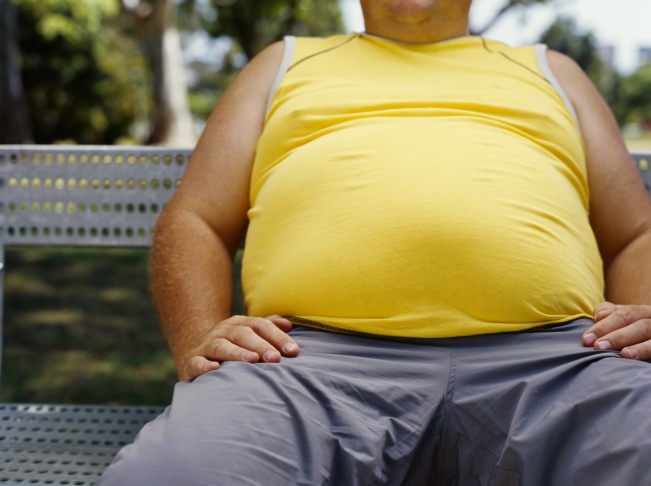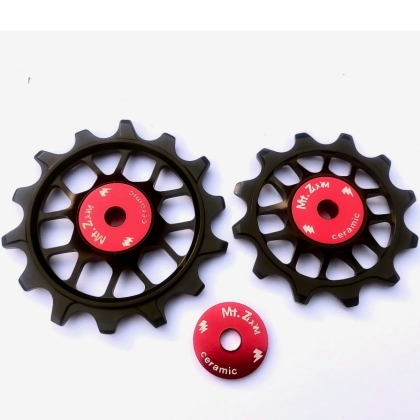Training Article

How To Loose Fat
Share on Facebook Share on TwitterPublished: 13th April, 2010
It's called "fat-loss" as apposed to "weight-loss" because many unsuccessful weight-loss programs result in loss of lean body tissue as well as fat. Loss of lean body mass, which is essentially muscle, drives your metabolic rate down and reduces your capacity for physical work. A successful fat-loss program centers on the reduction of body fat levels with minimal disruption to your metabolic rate and energy levels.
Energy Balance
This said, you're only going to lose weight if you create a negative energy balance. This means quite simply that you must have less energy going in (calories from food) than you're using up (basal metabolic rate + activity). If your energy in equals your energy out you're said to be at "energy balance" and you stay the same weight. On the other hand, if you consume more calories than you use up you'll put on fat and this is called a "positive energy balance".
If you want to be successful in your fat-loss campaign, don't be in a rush. You should be looking at creating a slight negative energy balance, which is something you'll be able to stick to long-term, rather than the ever-popular crash dieting strategies sold to us by the media. Crash dieting is unlikely to work long-term for various reasons. The motivation for rapid weight loss is short-term in nature anyway because it centers on a 'quick-fix' philosophy. This invariably leads to the roller coaster of emotions that typifies the 'yoyo dieter' - determination to diet, rapid weight loss, weight-loss plateau, loss of determination, return to old habits, rapid weight gain, guilt, new determination to diet, rapid weight loss… and so it goes on. Most people put excess fat on slowly and progressively over time - called creeping obesity, so it's totally unnatural (and very difficult) to lose fat quickly. All you'll lose through crash dieting is a whole pile of muscle and water.
Starvation
This is an extreme example, yet it demonstrates the point rather well. If you don't have any food coming in, your carbohydrate stores will run out pretty quickly, because of their very limited supply (within the muscles and liver). Once this runs out, you're left with fat and protein as fuel sources. In preference to using its fat stores, the body will metabolise protein for one logical reason. Protein constitutes the structure of our muscles and organs, all of which are living tissue, requiring energy to 'exist' at rest. By whittling down these structures in return for energy, the resting metabolic rate of the body is reduced. With little or no calories entering the body, this is a survival mechanism that works pretty well, because energy is produced through a process that also reduces the metabolism, enabling you to survive for longer without food.
This is why 'starvation diets' don't work, because when you stop eating, you loose loads of weight (muscle) and then when you get fed up (or think you've reached your goal weight), you start eating again. However, because your metabolism is suppressed, you initially store loads of fat, the muscle goes back on and ultimately you end up heavier than you were when you started.
The best way to lose fat for the active person
In order to hold on to your muscle when you're at negative energy balance, guess what? You need a diet rich in carbohydrate. Carbohydrate is said to have a 'protein-sparing' effect, because in its absence, protein will be converted to carbohydrate through a process called "gluconeogenesis" to enable your metabolism to run smoothly. In the absence of adequate dietary protein, your muscles get the chop! So, your first line of defense is to maintain a regular intake of carbohydrate to discourage protein metabolism. You'll also want to ensure you get some quality protein sources too, so that any stray protein metabolism comes from your food and not your hard-earned muscle mass.
In order to create your negative energy balance and encourage fat loss, it goes without saying that you should be looking at keeping dietary fat intake as low as possible - this is after all the stuff you're trying to get rid of! At rest, most of your energy comes from fat, so if you're not putting it into your body, you'll be using the fat stored around your organs and under the skin to fuel your metabolism. Any calorie you put into your body that is excess to requirements will be stored as fat though, so losing fat isn't just about a following a low-fat diet, it's about following a low-fat diet with a slightly negative energy balance.
Carbohydrate gives you the fuel to train
So apart from sparing protein and preserving a high basal metabolic rate, enabling you to burn more fat at rest, carbohydrate will provide you with the capacity to exercise effectively and at length. A diet of similar calorific value with a greater percentage of fat or protein will reduce your capacity to exercise, so isn't a logical choice for the Mountain Biker wanting to lose fat. For more information on carbohydrate and its usefulness as a fuel for exercise, please read the following related articles:
http://www.torq.ltd.uk/pfm_disp.asp?newsid=10
The glycaemic index - all carbohydrates are not alike…
To further enhance the effectiveness of your fat-loss program, a little knowledge of the glycaemic index (GI) will help. The GI is a measure of how quickly the glucose from the food we eat gets into our bloodstream. It's all measured against glucose, which is 100 and about the quickest, but there are one or two things quicker. Basically, the lower the GI, the longer the carbohydrate lasts, because it drip-feeds the metabolism and the less likely it is to be stored as fat. Big influxes of glucose from high GI foods force fat storage in the body's attempt to reduce blood sugar. Low GI foods are also more satisfying, are unlikely to leave you craving for more and are generally quite bulky due to their fibre content. This means that they generally contain less calories per serving.
Very active people should choose high glycaemic foods immediately after exercise, but if your aim is fat-loss you're better off going for low GI as much as possible. These are generally the starchy carbohydrates, but this isn't necessarily the case.
There's some comprehensive information on the glycaemic index at the following link:
http://www.torq.ltd.uk/pfm_disp.asp?newsid=14
Don't forget to exercise
It goes without saying that the more exercise you do, the more calories you're going to burn, so whilst you're sorting out what you're eating, don't forget to look at your weekly schedule and see if you can find a bit more time to get out on your bike. The most effective form of fat-loss exercise is prolonged steady low intensity exercise, because this burns more fat, but this requires time, a commodity many of us just don't have. If you have all day, this is very effective. If you have limited time, you're better off working harder for the time you have.
If you can use the gym a couple of times during the week for instance, try to maximize your time there and don't just stick to a steady pace in the belief that you'll burn more fat. Ultimately, the more calories you can burn during a workout, the greater you'll tip your energy balance to the negative. Higher intensity workouts during the week will boost your fitness too, giving you more power under the hood when you're riding the bike at the weekend.
You should also look at incorporating some upper body weights exercises into your routine too. Weights of high repetition and light resistance will develop muscle density. Muscle is a living tissue, so the more of it you have; the greater your resting metabolism and the more fat you'll burn at rest. Get the picture?
Good Luck.
Contact Us | Advertise | Use Our Online Entry System
All content © XC Racer.com | Website Designed and Developed by DesignUNLTD
